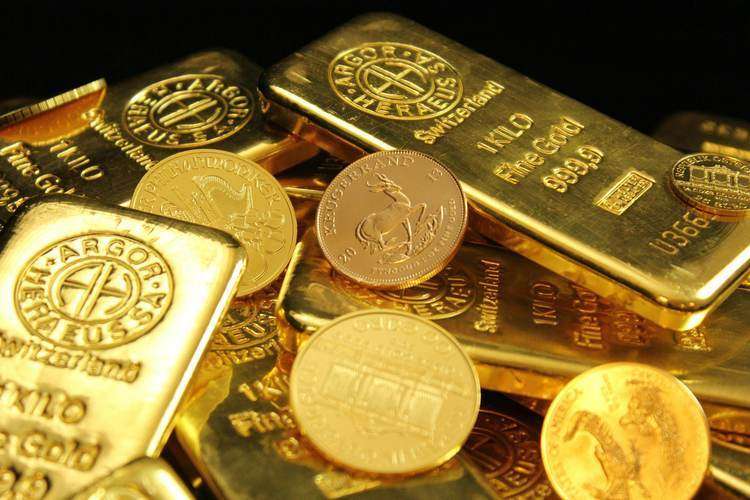Impact of Dollar and Employment Data on Gold Prices
Advertisements
The recent fluctuations in the spot gold market have caught the attention of investors worldwide. Currently, gold is hovering around $2857.65 per ounce, after witnessing a significant dip of nearly 1% on Thursday, where prices plummeted to approximately $2834.08. This volatility seems to be driven primarily by a stronger dollar in anticipation of critical employment data, coupled with profit-taking by some investors.
To put this in context, prior to this dip, gold prices had reached historic highs over five consecutive trading days, reflecting a strong bullish sentiment among traders. Nevertheless, a buying frenzy at lower prices during Thursday’s trading session helped alleviate some of the losses, with gold closing at about $2855.81 per ounce. This hints at the crucial role that investor behavior plays in the gold market, particularly during times of uncertainty.
Market strategists are closely monitoring these changes. Daniel Pavilonis, a senior market strategist at RJO Futures, weighed in on the situation: "Ahead of the crucial U.S. employment report, the dollar's rebound along with profit-taking and a slight rise in yields from recent lows collectively exerted pressure on gold prices.” His observations underscore the interconnectedness of various market factors in influencing gold's trajectory.
The upcoming employment report carries significant weight. According to a Reuters poll of economists, there’s an expectation that 170,000 non-farm jobs will be added in January, with the unemployment rate remaining steady at 4.1%. This projection is based on an impressive increase of 256,000 jobs in December. The resilience of the labor market has been a critical factor fueling economic growth, while trade and immigration policies have provided a rationale for adopting a pause in interest rate cuts.
However, there are internal divisions within the Federal Reserve regarding future policy directions. Chicago Fed President Austan Goolsbee asserted that the economy is in a state of full employment, robust growth, and declining inflation, conditions favorable for further rate cuts. Conversely, Dallas Fed President Lorie Logan indicated that a cooling labor market is a prerequisite for rate reductions. As long as there are no signs of labor market deterioration, she is prepared to maintain interest rates at their current level for “a considerable time,” even if inflation drops to near the Fed’s 2% target.
Additionally, recent trends in jobless claims and productivity growth have raised new concerns in the market. The latest data showed that the number of Americans applying for unemployment benefits rose to 219,000, an increase of 11,000. This aligns with a gradual cooling of the labor market. Furthermore, the annualized productivity growth rate in the fourth quarter decelerated from 2.3% in the previous quarter to 1.2%, falling short of economists’ expectations.

Turning to the currency market, the U.S. dollar index saw a temporary climb, reaching a high of 108.10 before narrowing its gains to close around 107.70 after the jobless claims data was released. A technical analysis indicates that gold's Relative Strength Index (RSI) has surpassed 70, suggesting that gold may currently be overbought, a situation often indicative of a price correction on the horizon.
In the UK, the Bank of England's (BoE) recent actions have also influenced gold prices. Deputy Governor Ben Broadbent shared that the BoE’s gold reserves have dropped by about 2% since the last year. There’s currently a strong demand for gold held at the Bank, driven by discrepancies in international pricing. Such dynamics illustrate the importance of central bank policies and align with global connectedness in financial markets.
On the bond market front, U.S. Treasury yields experienced a slight ascent, rebounding from a previous sharp decline. During Thursday’s late trading, the yield on the benchmark 10-year Treasury note rose to 4.438%, increasing by 1.8 basis points. This movement is critical as bond yields often relate inversely to gold prices, highlighting the tug-of-war between fixed income and precious metals in the broader market.
While the Federal Reserve anticipates that inflation pressures will gradually lessen, uncertainties about tariffs could lead to upward pressure on consumer prices in the U.S., complicating the inflation landscape. These conditions add a layer of complexity for investors assessing gold as a hedge against inflation.
Goldman Sachs has maintained its bullish forecast, predicting that gold prices could surge to $3000 per ounce by the second quarter of 2026. Nevertheless, they caution that a reduction in uncertainties surrounding U.S. tariffs, combined with normalized market positioning, could trigger a temporary decline in gold prices. Their outlook hinges on factors such as expected Fed rate cuts, ongoing central bank gold purchases, and increasing gold ETF holdings. They also highlighted potential upside risks to their price targets due to escalating policy uncertainties and heightened hedging demands from central banks and investors alike. Moreover, they warned that a 10% tariff on gold could widen the difference between COMEX futures and spot gold prices, which could further complicate market dynamics.
Apart from the closely watched non-farm payroll report, investors will also be eyeing the initial reading of the University of Michigan’s consumer sentiment index for February, along with speeches from Federal Reserve officials Bowman and Kugler. These upcoming events have the potential to significantly impact gold prices and overall market sentiment.